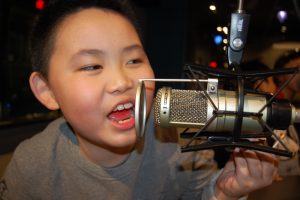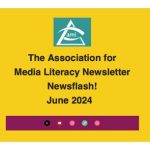40 Ideas for Media Literacy in Kindergarten (updated)
By Chelsea Attwell and Diana Maliszewski
It’s almost the end of 2018 – that means it’s time to release a list! We have 40 Ideas for Incorporating Media Literacy into a Kindergarten Program. Why 40? It fits with the Association for Media Literacy’s 40th anniversary (established in 1978 and still going strong in 2018). Check out this list to get a wide variety of ideas to support and embed Media Literacy in your program!
Media literacy isn’t just for “big kids”. The world is our classroom and by starting at a young age to wonder, question, discuss and understand all the media texts we are continually exposed to, this will help our littlest learners to become critical thinkers as well as literate media consumers and producers. Plus, it’s in the kindergarten curriculum! Under the frame of Developing Literacy and Numeracy Behaviours, the Ontario document states that students should “demonstrate awareness that texts can convey ideas or messages”, (10.2) “respond critically to animated works” (12.1) and “communicate their ideas verbally and non-verbally about a variety of media materials” (12.2).
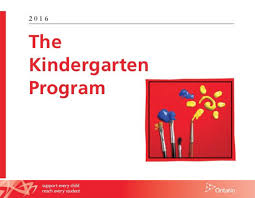
1.Teach students about camera angles. This will help with student documentation of their own learning. This activity can be extended when watching short films or cartoons with students. You can talk about how camera angles provide implicit messages (e.g., high angle makes something appear small and powerless). Let them take photos with your class iPad (if you have one).
2. Go on a community walk with your students and examine, compare, and contrast the different signs they see in their community.
3. At a dramatic centre in your classroom, create a store and students can create their own money. Show students samples of money from Canada or from countries where students are from. Use the media triangle (text, audience, production) and ask them what they notice about the text.
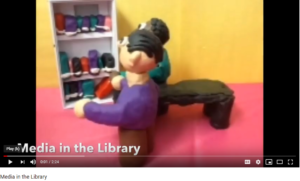 4. Introduce the idea of media with a simple definition. An example, which includes actions to support the idea, is: “Media is made by people, for people. You can see it. You can hear it. You can feel it. You can wear it. You can experience it. All media has a message” (For videos made by Grade 1s to share/teach this definition, go to https://www.youtube.com/user/GNTLinTO )
4. Introduce the idea of media with a simple definition. An example, which includes actions to support the idea, is: “Media is made by people, for people. You can see it. You can hear it. You can feel it. You can wear it. You can experience it. All media has a message” (For videos made by Grade 1s to share/teach this definition, go to https://www.youtube.com/user/GNTLinTO )
5. Talk about examples and non-examples of media. If your students have had exposure to the definition, they will be able to use the definition to support their explanations about whether or not an object is an example of media.
6. Go on a “tag hunt”. What items have tags? Where are they? What do they say or share? This is a concrete way to introduce the idea that people and companies produce media objects.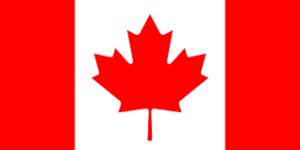
7. Does your class have a Canadian flag in it? That’s a concrete example of media. Talk about the colours and shapes that are on the flag. Can you notice other items that try to link to Canada by using the same colours and shapes?
8. new take on Halloween: find photos of various kids’ costumes. Ask students to sort the costumes in different ways. You can use various graphic organizers to help you (e.g., double t-chart, triple t-chart, Venn diagram).
9. Write a poem together! Or select a poem based on a current inquiry. Add sound effects to the poem, do an audio recording of the poem and listen to the various versions for feedback.
10. Create a series of posters to promote an event in your school community (e.g., student of the month assembly, reducing waste, book fair).
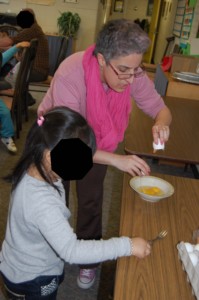 11. If you are cooking with your students why not create a cooking show?!
11. If you are cooking with your students why not create a cooking show?!
12. Use the media triangle to examine Valentine’s Day cards, birthday cards (or any cards for any occasion) and have students create their own.
13. Work with an upper grade to co-create a story book.
14. Take a walk around the school to look for letters and numbers.
15. Take a walk around a few different classrooms in the school and examine how the environment is constructed. What do students notice about a kindergarten classroom vs a grade five classroom? How is the hallway different from the office?
16. Collect a variety of menus from local restaurants in your school community. Ask students to sort the menus in different ways.
17. Have students make their own menus using grocery store flyers.
18. Use the media triangle to deconstruct and examine a cereal box. Ask students to design their own. (Check first to see if they are familiar with cereal as a breakfast food and cereal boxes in general. Eating cereal isn’t a tradition for everyone.)
19. Create a Public Service Announcement (P.S.A.) to raise awareness about an issue in the school (e.g., litter-less lunch).
20. Compare and contrast a short story and a short movie/episode based on the book (e.g., The Lorax, The Cat in the Hat, Franklin Goes to School).
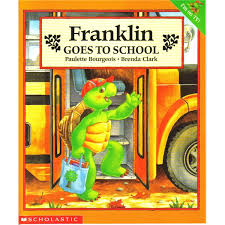
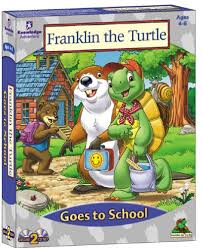
21. Participate in a Google Meet with your students with an expert or special guest to support an inquiry. This could even be with another class doing the same inquiry as you. Afterwards, ask your students what was different about the online experience vs. face-to-face.
22. Conduct an interview with an “expert” to support an inquiry. (e.g., ask you school Eco-Club to come into your classroom to talk about ways to reduce waste in your school community).
23. Talk with your students about ways to make creative and meaningful comments in Google Classroom by examining age appropriate online forums.
24. During a read-aloud, discuss the parts of a book.
25. Use the media triangle to examine favourite logos that your students recognize.
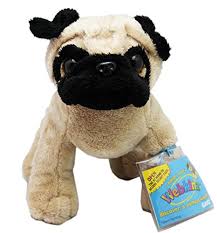 26. There are plenty of media opportunities related to Webkinz (a stuffed toy that has an online component to it as well). You can turn off or on the ads (which are all safe for kindergarten students to see) – how does this change the playing experience online? What ads appear? When? For whom?
26. There are plenty of media opportunities related to Webkinz (a stuffed toy that has an online component to it as well). You can turn off or on the ads (which are all safe for kindergarten students to see) – how does this change the playing experience online? What ads appear? When? For whom?
27. While on Webkinz (www.webkinz.com), examine areas like the newspaper, arcade (games), store, and other sections. How do they compare to “real-life” media counterparts? What skills are valued in the games? How does Webkinz try to appeal to teachers and parents? How does Webkinz continually try to get players to invest even more money after they’ve bought the toy and registered?
28. Do a “character count” of assorted picture books in your class library or part of your school library. Who is the main character in the book – a boy or a girl? Do the characters in the books look or act like the students in the class?
29. Look at your school assemblies as a media text. Who are they for? How / why is a Remembrance Day assembly different than a pep rally / fundraising kickoff assembly?
30. The way we style, cut and colour our hair has media implications. What do we think about a person with long hair? No hair? Grey hair? Blonde hair? Purple hair? Who “can” and “can’t” have certain kinds of hair, according to the students?
31. Use Google Streetview to take a virtual walk around a neighbourhood. If you have an interactive white board, circle and annotate the various examples of media they notice.
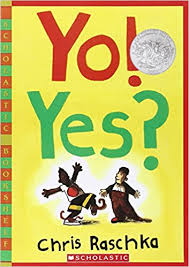 32. Poll your class after “experiencing” different kinds of media (e.g. a picture book, an animated short film, a song, etc.) Who liked it a lot, a little, or not at all? Why? Who might like it more or less?
32. Poll your class after “experiencing” different kinds of media (e.g. a picture book, an animated short film, a song, etc.) Who liked it a lot, a little, or not at all? Why? Who might like it more or less?
33. Talk about the sound and tone of voices. Read a book like Yo Yes and demonstrate how meaning can change based on how a word is said and the facial expressions that accompany the message’s delivery.
34. Look at the way “good guys” and “bad guys” are portrayed. Neil Andersen wrote a great blog post earlier this year about villains. Adapt some of those suggestions to kindergarten students.
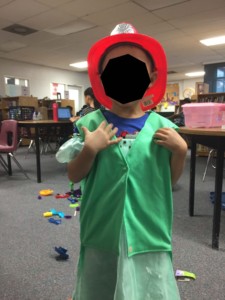
35. Explore hats. Some hats are associated with certain jobs – can they recognize them? Other items worn on the head (e.g. turbans, hijabs) have different significance; include discussion on these items in a respectful, inclusive way (and avoid “exoticizing” them).
36. Read parts of the book Is That For a Boy or a Girl? by S. Bear Bergman.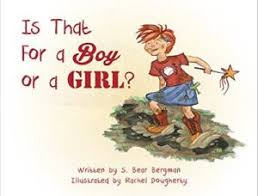 Why do fast food meal toys, clothes, and other media texts like to sort their items into “boy things” and “girl things”? Another book that lends itself well to media examination is Beautiful by Stacy McAnulty.
Why do fast food meal toys, clothes, and other media texts like to sort their items into “boy things” and “girl things”? Another book that lends itself well to media examination is Beautiful by Stacy McAnulty.  Read the words on a page before showing the picture. How does the meaning change because of the picture? Make a list of things students consider beautiful. Or make a similar book on a different theme (like “Strength” or “Courage”).
Read the words on a page before showing the picture. How does the meaning change because of the picture? Make a list of things students consider beautiful. Or make a similar book on a different theme (like “Strength” or “Courage”).
37. Many kindergarteners love stickers. Collect some examples. Who might like these stickers? When are they used?
38. When teaching about colours, include a media lens – what feelings are associated with what colours? How does colour interpretation differ between cultures? (e.g. black for mourning vs white, brides dressed in white vs red)
39. When studying different living things (e.g. bees), see if there are different opinions or portrayals of these animals/insects/plants on various consumer products (e.g. bees on a can of insecticide vs bees on a bottle of honey). What message is the company trying to convey? Even though this particular book is for an older audience, check out the illustrations in Friend or Foe: The Whole Truth about Animals that People Love to Hate by Etta Kaner and David Anderson.
40. Make time to talk with your students (without judgement) about the media they watch, listen to, and experience at home. What games do they play? What YouTube channels do they watch, if any? What toys do they like?

(This Kindergarten curriculum works best in Elementary, but can adapt to Secondary classrooms -ed.)

